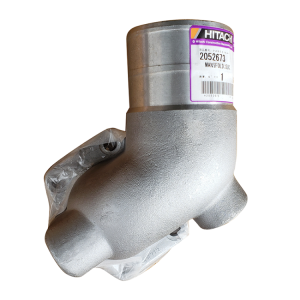Introduction
Oil suction pipes are crucial components in oil transport systems, responsible for the intake and transport of crude oil from storage tanks to processing units. The oil suction pipe 2052673 is a specialized component widely used in the oil and gas industry. In this comprehensive guide, we will delve into the function and significance of oil suction pipe 2052673, exploring its construction, working principles, and applications. Gain a deeper understanding of this essential component and discover how it contributes to seamless oil management processes.
Section 1: What is Oil Suction Pipe 2052673?
Oil suction pipe 2052673 is a specialized component that connects the suction side of an oil pump to the storage tank, allowing efficient extraction of crude oil. It is designed to withstand high-pressure conditions and prevent leakage or contamination of the oil. Constructed from durable materials such as steel or aluminum, the oil suction pipe 2052673 comes in various sizes and configurations to accommodate different oil types and flow rates.
Section 2: Function and Components of Oil Suction Pipe 2052673
The primary function of oil suction pipe 2052673 is to enable efficient oil extraction from storage tanks, ensuring a continuous supply to downstream processing units. It is composed of several key components, including:
Inlet or Suction Nozzle: This is the opening through which crude oil enters the oil suction pipe.
Strainer or Filter: A strainer or filter is located at the inlet to remove debris, particles, or contaminants from the crude oil, preventing damage to downstream equipment.
Pipe Body: The main section of the oil suction pipe 2052673 that transports the crude oil. It should be constructed with materials resistant to corrosion, abrasion, and chemical reactions.
Couplings and Fittings: These components connect the oil suction pipe 2052673 to the pump and storage tank, ensuring a secure and leak-free connection.
Section 3: Applications of Oil Suction Pipe 2052673
Oil suction pipe 2052673 finds application in various industries and sectors, primarily in oil and gas production and refining. It is used to extract crude oil from storage tanks and transport it to processing units such as refineries, where it undergoes further treatment to obtain refined products such as gasoline, diesel, or lubricants. The oil suction pipe 2052673 is also utilized in offshore drilling, providing efficient transport of crude oil from drilling platforms to storage vessels or pipelines.
Section 4: Considerations for Selecting Oil Suction Pipe 2052673
Several factors should be considered when selecting oil suction pipe 2052673:
Crude Oil Compatibility: Choose an oil suction pipe material that is resistant to the specific crude oil being transported and any potential corrosive substances.
Flow Requirements: Consider the desired flow rate and pressure drop limitations to ensure efficient oil transport.
Temperature and Pressure Conditions: Select an oil suction pipe that can withstand the temperature and pressure conditions of the application.
Size and Length: Determine the appropriate size and length of the oil suction pipe based on the volume of crude oil to be transported and the distance between the storage tank and processing unit.
Section 5: Maintenance and Care
Proper maintenance of oil suction pipe 2052673 is crucial for optimal performance and longevity. Regular inspections, cleaning of strainers or filters, and detection of leaks or damage are essential practices. Adequate protection against external elements, such as UV radiation or physical impact, can help extend the lifespan of the oil suction pipe. Additionally, following manufacturer guidelines and industry standards for installation and usage ensures safe and efficient operation.
Conclusion
Oil suction pipe 2052673 is a vital component in oil and gas transport and production, enabling efficient extraction and transport of crude oil from storage tanks to processing units. By understanding the role, components, selection considerations, and maintenance requirements of oil suction pipe 2052673, users can make informed decisions and ensure optimal performance and reliability in their oil management processes.



